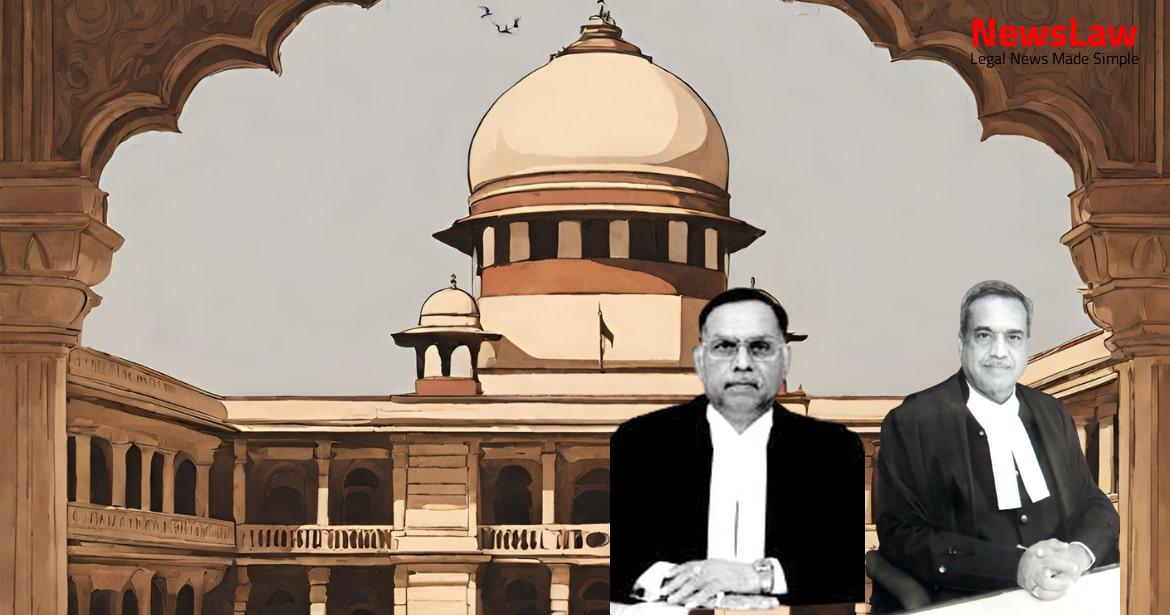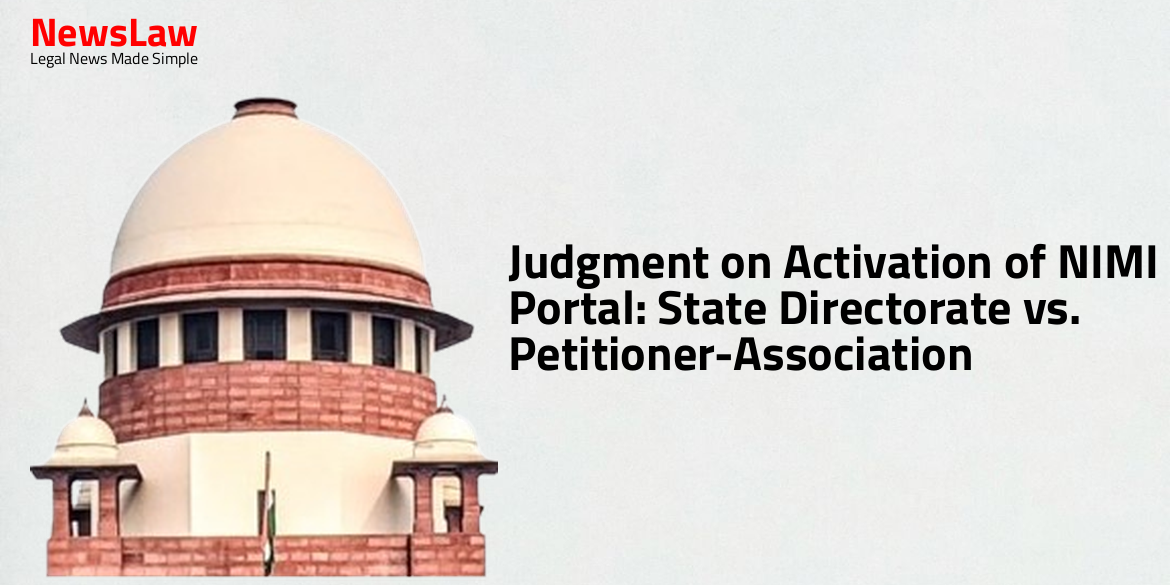The Supreme Court of India has delivered a significant judgement on the dispute over possession in a land acquisition case. The case involves the ownership of land measuring two Kanal and the construction of residential houses and shops by the respondent. Despite the collection of compensation in 2003, the development for public purpose has not commenced, leading to a legal battle. Stay updated on the latest legal outcomes in the Land Acquisition Possession Dispute Judgement by the Supreme Court of India.
Facts
- The possession of the land in question has not been physically taken from the respondent.
- The respondent claimed ownership of the land measuring two Kanal.
- A writ petition was filed by the respondent in the High Court of Punjab & Haryana in 2015.
- The acquisition has lapsed as per Section 24(2) of the Act of 2013 since possession was not taken.
- The compensation was collected by the respondent in 2003 and he built residential houses and shops on the land.
- The development for public purpose has not been initiated so far.
- Direction issued to Land Acquisition Collector to determine the refund amount within one month.
- Owners of such land are entitled to compensation under the Act of 2013.
- Compensation was obtained after the issuance of Notification under Section 4 of the Land Acquisition Act, 1894 and the award was passed.
- The High Court determined the existence of two constructed rooms in the disputed area.
- The rooms were measured to be 15’x12′ and 18’x12′, and were enclosed by a boundary wall.
- The specific location of the rooms was identified as Khasra No.16//23/1/2(2-0).
Also Read: Urs Family Property Dispute: Supreme Court Decree
Arguments
- The counsel for the petitioner, Dr. Monika Gosain, pointed out the Rapat dated 21.7.2003 which had caught the attention of the Court.
- Dr. Monika Gosain argued that possession had indeed been taken, emphasizing the significance of drawing a panchnama on the spot as the mode of taking possession, citing several precedents of the Court supporting this argument.
- The Policy for Return of Un-utilized Land was framed under the provisions of Right to Fair Compensation and Transparency in Land Acquisition, Rehabilitation and Resettlement (Haryana Amendment) Act, 2017 and notified on 14.9.2018 by the State Government.
- Paper possession does not equate to taking physical possession.
- Release orders have been passed by the State Government on 30.10.2006 and 21.2.2014 for similarly situated landowners adjacent to the land in question.
- Compensation was paid to the respondent in 2003, and physical possession remains with the respondent.
- There were two rooms in existence for which possession has not been taken as per the law.
- The acquisition process has been finalized, and any encroachment made thereafter will not benefit the respondent.
- Discrimination against the respondent is not justified.
Also Read: Promissory Estoppel and Public Interest: Union of India vs. M/s Dharampal Satyapal Ltd.
Analysis
- The act of the Tehsildar in inspecting the land, determining waste and arable parts, and announcing possession constitutes taking possession.
- Refusal of the owner does not negate possession.
- Physical possession may be difficult in compulsory acquisition cases.
- Taking possession depends on the nature of the land.
- Drawing of ‘panchnama’ is enough for taking possession.
- Not mandatory to give notice before taking possession, but desirable to avoid fraud.
- Possession was taken as proven by memorandum dated 21.7.2003.
- Ownership of two rooms and boundary wall by the appellant does not invalidate acquisition.
- Interference by the High Court was unjustified as possession was established.
- Presence of owner not essential for possession if nature of land allows.
- Stay of dispossession halts further proceedings.
- Irregular notice under Sections 9 and 10 is curable and does not invalidate award.
- Retaining possession does not make acquisition unlawful.
- Possession was taken over by the State Government as evidenced by the ‘Rapat’ of 21.7.2003.
- The act of the Tahsildar going to the spot and inspecting the land was deemed sufficient to constitute a taking of possession.
- In some cases, it may not be possible to physically take possession of acquired land, so symbolic possession through actions like drafting a panchnama is considered enough.
- Publication of the declaration under Section 6 gives conclusiveness to the public purpose of the acquisition.
- Taking symbolic possession is acceptable if the land is vacant and unoccupied.
- Drawing a memorandum or panchnama in the presence of witnesses is a common mode of taking possession.
- Taking actual possession is essential when the Government acquires land under the Land Acquisition Act, 1894.
- No hard-and-fast rule exists on what act constitutes taking possession of acquired land.
- In cases where there are standing crops or structures on the acquired land, mere inspection by the authority is not enough for taking possession.
- The mode of taking possession is often by drawing a panchnama or recording a memorandum in the presence of witnesses.
- Possession must be taken in a manner that ensures all interests in the land are acquired by the Government.
- The individual in question is not entitled to protect the land due to encroachment.
- The encroachment on the land disqualifies the individual from claiming release of the land.
- The development that has taken place on the land indicates it is not unutilized land.
- The interference by the High Court led to the unwarranted quashing of the acquisition.
Also Read: Jurisdictional Interpretation in Kamlesh Babu v. Lajpat Rai Sharma
Decision
- -1.5
Case Title: THE STATE OF HARYANA Vs. SUNDER LAL
Case Number: C.A. No.-005754-005754 / 2019



